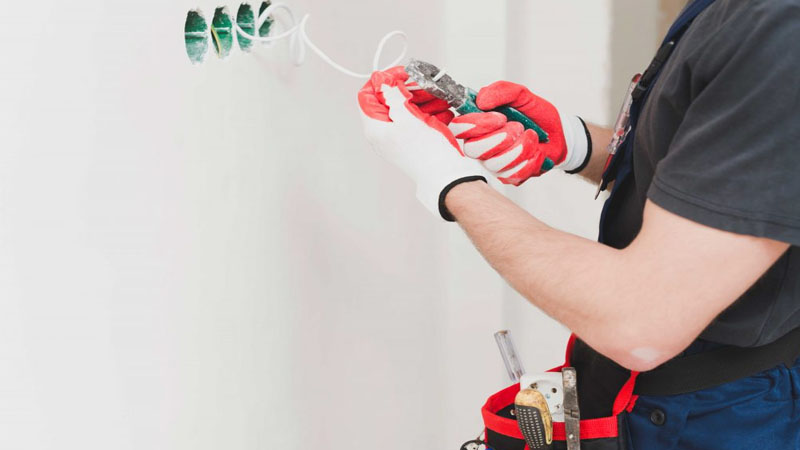Electrical safety at home is paramount, acting as a frontline defense against potential accidents, fires, and electrical shocks. Proper electrical wiring ensures electrical currents are transferred safely and efficiently, reducing the risk of overheating or short circuits. Therefore, it is crucial to engage qualified professionals for electrical installations and repairs, ensuring that all work aligns with the highest safety standards. Regular inspection and maintenance of the electrical systems also contribute to overall safety, checking any potential hazards.
In this article, we will discuss the importance of electrical wiring in home safety and some key tips to consider.
Understanding Electrical Wiring & Its Impact on Home Safety
Electrical wiring involves the installation of cables and wires to transfer electrical currents from one point to another. Different types of wiring are used for different purposes, such as low-voltage lighting, phone line wiring, appliance connection lines, and more. Each type of wiring carries a certain current rating; it is important to match the correct cable with the appliance for proper functioning.
Poorly installed wiring can lead to accidents due to loose wires or overloaded circuits, and may also contribute to fire outbreaks in homes. It is important to adhere to electrical codes and regulations when installing wiring systems as they help ensure safety standards are met. Electrical inspections on newly constructed or remodeled homes are also important to identify any wiring problems.
Signs of Ineffective or Faulty Electrical Wiring
When inspecting electrical wiring, several signs may point to ineffective or faulty wiring. These include:
- Sparking outlets and switches
- Flickering lights
- Hot surfaces near outlets, switches, wires, or cords
- Strange odors coming from the outlets or wiring systems
- Discolored wall plates around outlets and switches
- Frequent tripping of circuit breakers
If you find any of the above signs, it is important to call a qualified electrician immediately. They can inspect the wiring system and repair or replace any faulty components.
Ensuring Effective and Safe Electrical Wiring in Your Home
Many homeowners attempt DIY electrical wiring installation and repairs, however, this is not recommended. Electrical repair and installation should be conducted by qualified professionals to ensure safety standards are met. Licensed electricians use tools such as ohmmeters, ammeters, circuit testers, and more to identify and fix any potential problems in the wiring system.
Steps to Ensure Effective Wiring During Initial Installation
- Hiring Qualified Professionals: Always hire a certified electrician for any electrical installation. They have the knowledge and experience to ensure the job is done safely and efficiently.
- Use of Quality Materials: Choose high-quality materials for your electrical wiring. One such example is Braided Copper Wire which is known for its flexibility, durability, and high electrical conductivity.
- Adherence to Safety Standards/Codes: Ensure that the electrician adheres to the National Electrical Code (NEC) and other local regulations during the installation process.
- Proper Planning: Before starting the wiring installation, comprehensive planning of the electrical layout is necessary. It includes the placement of outlets, switches, lighting fixtures, and appliances.
- Right Wire for the Right Job: Different appliances require different types of wires. For instance, heavy-duty appliances need thicker wires that can handle higher currents. Therefore, ensure the correct wire is used for each appliance.
- Regular Inspection: After the initial installation, a thorough inspection should be carried out by a professional to confirm that everything is installed correctly.
These are some of the key steps to consider when installing electrical wiring in a home. They will help ensure that the wiring is installed correctly and safely, reducing any potential hazards.
Conclusion
Electrical wiring is a key component of home safety as it helps to transfer electrical currents safely and efficiently. Poorly installed or faulty wiring can lead to accidents or fires in homes. Therefore, it is important to hire qualified professionals for all electrical installations and regular inspections to ensure safety standards are met. By following the steps outlined in this article, you can ensure your home is safe from electrical hazards.


